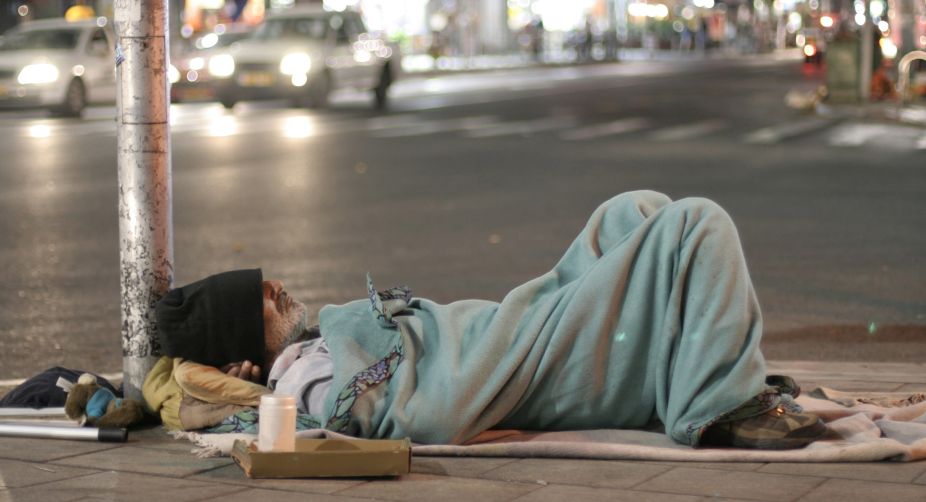SDMs to investigate ineligible ration card holders in HP
It has been found that several income tax payees/ government employees have made cards in the category of BPL, priority household and Antyodaya families.

Photo: getty Images
When working hard at our workplace or travelling in difficult conditions, we comfort ourselves with the thought of resting after reaching home, but what if there is no home to go to? This is the cruel reality for millions of homeless people in our country. The precise number is difficult to provide as homeless people are most likely to be left out in census counts. Indications are that their number is well in excess of 3 million. This number is likely to go up significantly if those on the verge of homelessness or very precariously housed people are also included.
Homeless people are most exposed to all weather extremes, cold waves as well as torrential rains, and this is just one of the reasons which exposes them more to illness and disease. Most homeless people also suffer from varying levels of hunger and malnutrition as assured or adequate income to meet basic minimum needs is not available to the overwhelming majority of them. While suffering the most from hunger they are the ones who are least likely to get subsidised food from ration shops due to lack of residence proof. Another reason is the denial of essential sanitation facilities and sometimes even clean drinking water. Vulnerability to mental health problems is also very high. The homeless are also most exposed to road accident injuries as well as workplace accidents. They are also the ones who are least likely to be able to access proper medical treatment—many of them do not have the basic identity papers for obtaining care in government hospitals.
The homeless face high levels of insecurity. This insecurity comes on the one hand from goons and criminals who exploit and terrorise them in various ways. On the other hand, some insecurity also comes ironically from policemen who often beat them indiscriminately or pick them up to send them forcibly to beggars’ homes.
Advertisement
These problems are particularly acute for homeless women and children. Given the increasing insecurity generally of women in many cities, one shudders to think of what homeless women have to endure. They as well as homeless children are very vulnerable to sexual exploitation. Children are vulnerable also to substance abuse. The problems of homeless people have been generally discussed in the context of big cities such as Delhi and Mumbai, while the problems of homeless people living in smaller urban agglomerations have been almost completely neglected. However, as I found during a recent visit to Sumerpur town of Pali district (Rajasthan), migrant tribal workers from remote villages were spending their night in a most inhabitable part of the town, plunged in darkness, denied any facilities, exposed not just to mosquitos but even scorpions and snakes. With the accentuation of the livelihood crisis as well as increasing social disintegration, the number of homeless people in India is increasing. In some places the slum dwellers pushed to the outskirts of cities and far away from previous livelihoods as a part of slum demolition drives have been forced to start living as homeless people near their employment places. To give an example, a community engaged in the highly creative work of collecting used clothes in exchange for new utensils and then selling clothes after mending and cleaning them was based in Raghubir Nagar area of West Delhi where they had their huts as well as work sheds. Their huts were demolished creating a livelihoods crisis as they were sent far away. Finally, to save their work several of them had to stay back at night in the open as homeless people.
Government efforts to help homeless people are confined mainly to providing them shelters at night, and even these efforts pick up mainly during the winter months. But when other government policies, sharp inequalities and social disintegration are causing an increase in the number of homeless people these efforts can have only a limited impact. Despite this limitation, however, a shelter-based approach can also give some good results if these shelters become a hub for integrating several needs of homeless people, combining safety, nutrition, health and information with shelter. Good results can be realised if volunteers from within the homeless people can be given important responsibilities and their close involvement is assured. They will need some training and motivational support, and with such modest help they can play a very important role in taking forward the programmes for helping the homeless.
Giving such responsibility to carefully selected representatives of the homeless along with adequate budgetary support is possible once there is recognition of and respect for their rights. Most homeless work in very adverse conditions to not only support themselves but also to send badly needed economic support to elderly people, children and women in remote villages. These include villages affected by various disasters. Initiatives that help homeless people in cities also help their dependents in villages. Hence the needs of homeless people should get high priority in urban planning and governance.
The writer is a free-lance journalist who has been involved with several social movements and campaigns.
Advertisement